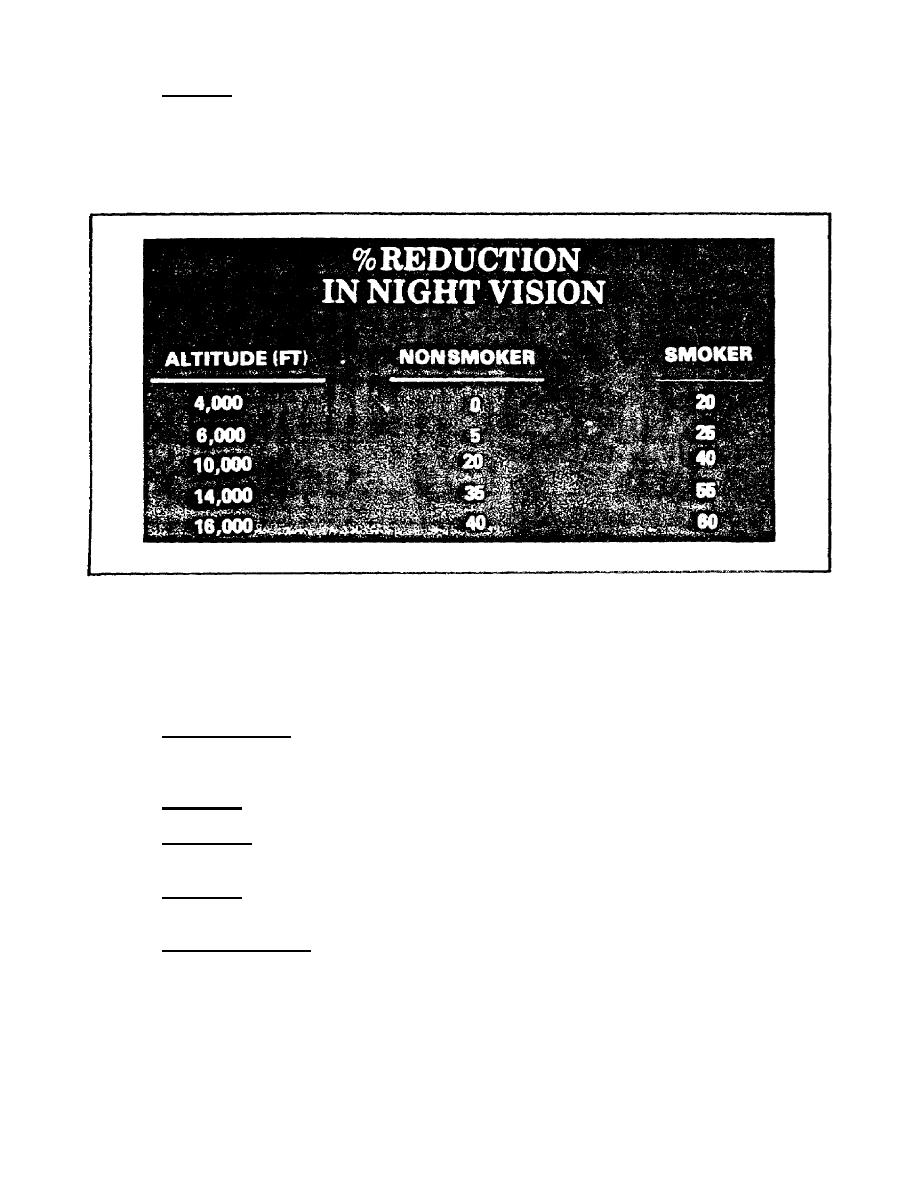
e. Tobacco. The use of tobacco causes increased levels of carbon
monoxide in the blood and corresponding reductions in the ability of the eye
to adjust to reduced illumination. A person who smokes an average of one
pack of cigarettes per day will experience an 8- to 10-percent increase in
the level of carbon monoxide in his blood. This increase corresponds to
reductions in night vision at the different altitudes as shown in Figure 12.
Figure 12.
Reductions in night vision from smoking.
7.
PREPARING FOR NIGHT FLIGHT
There are several things that flight crew members can do to prepare
themselves for flying at times of low illumination,
a. Understanding. Understanding the capabilities and limitations of
the eye will reduce the normal levels of stress associated with flying at
night.
b. Avoiding.
Avoid imposing self-induced stress.
c. Preparing. Be prepared to use off-center viewing and effective
scanning techniques during the flight.
d. Adapting. Allow the eyes to adapt to low-illumination conditions
for a period of 30 to 45 minutes before flying.
e. Staying Adapted. Once the eyes are adapted to the reduced
illumination avoid destruction of night vision by exposure to bright
illumination.
22


 Previous Page
Previous Page
